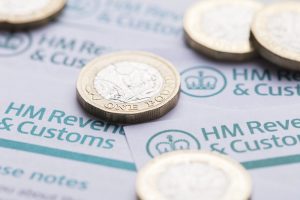A high earner’s guide to investing in retirement

Investing in your pension can be an excellent way to grow your wealth, but it’s not the only way to ensure you have sufficient income for your retirement. As a high earner, you’ll also have to understand and manage the potential impact of the Lifetime Allowance — this is currently £1,073,100.
In addition, it’s important consider how to diversify your tax wrappers to ensure you are investing in your retirement in the most tax efficient way. This is arguably just as important as diversifying your investments.
When it comes to retirement planning, the best option is to consult with an expert financial adviser. With their professional help and some clever financial planning, you can structure your assets wisely, in the most effective way, and aim to reduce your tax burden.
In this article we’ll explore the expert’s approach to tax-efficient investing in retirement, so you can achieve your financial goals once you reach retirement age.
The four-box principle
One theory that offers a helpful approach to retirement planning is known as the ‘four-box principle’ — as named by Saltus, a financial planning and investment management company. This method aims to minimise the tax you pay on your retirement income, and focuses on four core tax wrappers, as the name suggests.
Depending on your personal circumstances and stage in life — and whether you’re accumulating wealth or drawing on your assets — these tax wrappers have varying advantages and uses.
If used in the right combination these four tax wrappers can have a significant effect on your wealth. These are:
- Self-Invested Personal Pension (SIPP)
- Individual Savings Account (ISA)
- General Investment Account (GIA)
- Offshore Bond
Let’s explore each of these tax wrappers further.
Self-Invested Personal Pension (SIPP)
Any contributions to your SIPP are gross of all tax — one of the main reasons they known to be a great vehicle for building wealth. Your contributions are also free of Capital Gains Tax (CGT). When it comes to withdrawing from your pension, you can usually take 25% completely tax-free, but the remaining amount is taxed at your marginal income rate.
Individual Savings Account (ISA)
The contributions to an ISA are net of tax (unlike a SIPP). However, once your money is in the ISA wrapper, there is no further tax to pay. Withdrawals from an ISA are also completely tax free.
General Investment Account (GIA)
Differing from an ISA and SIPP, GIAs are a fully taxable environment, meaning you’re liable for income tax and CGT. However, when accessing your money, you can make the most of your CGT allowance. For the tax year 2021/2022, this stands at £12,300 — a considerable amount of money you can access tax-free. Any gains over and above the CGT allowance are taxed at your marginal CGT rate.
Offshore Bond
A bond works in a way to essentially defer tax. Each year of your retirement, you can access 5% of your initial investment, without any immediate tax charges and free of CGT. However, any gains withdrawn from a bond are taxed as income at your marginal tax rate.
How do you use the four core tax wrappers?
To better understand the four-box principle it’s best to put the method into practice and look at an example.
A couple have £2 million to invest, and wish to have an income of £90,000 a year in retirement. Through structuring their wealth and using the four core tax wrappers, they can access this amount, completely free of tax.
In this case, they have been working with financial planning services to ensure they can navigate this somewhat complex method. Their assets are structured collectively as follows:
- SIPPs — £750,000
- ISAs — £500,000
- GIAs — £500,000
- Offshore Bond — £250,000
Using their tax-free personal allowance (as of tax year 21/22), they withdraw £12,570 each — a total of £25,140 tax-free.
Next, they make use of their annual CGT allowance, which as previously mentioned, is currently £12,300 each. This means they take a total of £24,600 from their GIAs.
Any withdrawals from an ISA are free of tax, and therefore the couple take £27,760 from their ISAs.
Finally, they take 5% of their initial investment from their offshore bond, which equals £12,500, and again, is tax-free.
In total, the couple have £90,000 a year, completely tax-free!
—
The four-box principle can be a complex method, and so it’s always best to consult with a financial adviser, to make the most of their expertise, before you make any decisions.
Disclaimer: Information is correct to the best of our understanding as at the date of publication. Nothing within this content is intended as, or can be relied upon, as financial advice. Capital is at risk. You may get back less than you invested.







